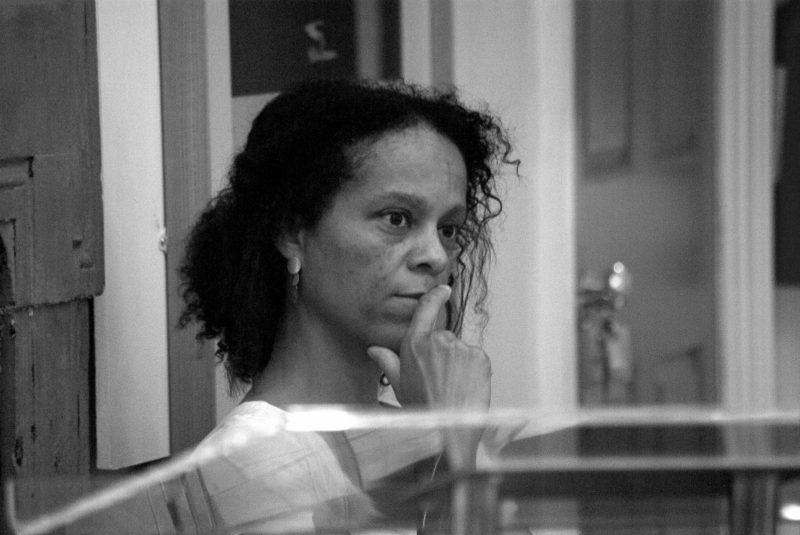In the spirit of Women’s History Month, Reads beat writers suggest some of their favorite female-authored texts, each of which offers unique and complex insights into themes of gender and being a woman in the world.
“Girl, Woman, Other” by Bernardine Evaristo — Recommended by Jared Klegar
Following the lives of 12 very different characters — mostly Black, female and British, but traversing age, sexuality and class — “Girl, Woman, Other” is a towering achievement of intersectional feminist storytelling. We meet Black lesbian playwright Amma and her strong-willed, college-aged daughter Yazz; non-binary social media influencer Morgan and their 93-year-old great-grandmother Hattie; and Oxford-educated investment banker Carole and her former secondary school teacher Shirley … who goes way back with Amma. Each has their own story of triumph and despair, of self-determination and patriarchal oppression, of feeling empowered and feeling othered.
Characters are linked through families, friendships and happenstance interactions — but Evaristo’s poetic prose so thoroughly explores their personal journeys that we cannot help but look deeper and see (even when the characters themselves cannot) the threads of shared experience and ideology that bind them. And so, when I read the novel’s final lines and lifted my eyes from the page — tears rolling down my cheeks — I saw a new world open up to me. This was a world in which everyone had their own story, their own set of unique experiences I could never fully understand, but with whom I could stand beside in our shared, flawed humanity.
“Trick Mirror” by Jia Tolentino — Recommended by Lana Tleimat
In her 2019 book “Trick Mirror,” Jia Tolentino provides “reflections on self-delusion” through nine essays on culture, ranging in topic from athleisure wear to sexual assault reporting to her brief experience as a contestant on a reality TV show. As the title may suggest, her voice is rhetorically complex. In exposing the contradictions of a given aspect of our culture, Tolentino constantly reckons with her own contradictions. For instance, in an essay about what has made the internet so destructive, she recognizes that she herself contributes to those issues as a player in the media. Every other passage seems to end with something along the lines of, “but maybe I’m doing it too.”
Something about this back-and-forth internal monologue and self-doubt is quintessentially female. The burden of an identity that society takes such painstaking effort to prescribe roles to is that one can lose sense of where those roles end and where the self begins. Tolentino asks if we can ever be sure.
“The Voyage Out” by Virginia Woolf — Recommended by Lily Nilipour
Many of us are quite familiar with Virginia Woolf’s most famous works; we read “To the Lighthouse” and “Mrs. Dalloway” in high school English or introductory literature classes, and “A Room of One’s Own” is almost a prerequisite to feminist theory. Yet, less talked about but perhaps just as essential to understanding the oeuvre of one of the most important writers of the 20th century is Woolf’s very first novel “The Voyage Out.”
A first novel can tell us much about an author. “The Voyage Out” follows our protagonist Rachel, a young woman who plays the piano, as she embarks on a journey with her aunt and uncle to South America. It is a “voyage out” in more than just one way, though — by leaving her sheltered home, Rachel and her ideas are entering society at large. While reading, I could not help thinking that Rachel was, in some ways, a figure of Woolf herself, for Rachel is often searching for some deeper truth or reality in the world she inhabits, a reality tied to her societal positions as both an artist and a woman. Woolf’s subsequent novels may be seen as a continued inquiry into these themes, each a new attempt to answer Rachel’s seemingly simple question: “And life, what was that?”
“The Handmaid’s Tale” by Magaret Atwood — Recommended by Kyla Figueroa
The speculative and dystopian fiction “The Handmaid’s Tale” is a staple classic. It is set in near-future New England in a patriarchal, totalitarian and theological society named The Republic of Gilead. The story chronicles Offred, a Handmaid, and the oppression she faces as a woman who systematically loses autonomy over her body and life. As a Handmaid — one of the few fertile women left in an era of radiation and environmental pollution — Offred is forced to produce children for the “Commanders,” the ruling class of men. This novel is not a prediction for the future. Rather, it is a cautionary tale for what happens if the social, political and religious trends of the United States in the 1980s are taken to their logical end.
“Where the Crawdads Sing” by Delia Owens — Recommended by Kirsten Mettler
Owens was not always a novelist. She was a zoologist first — and you can feel her passion for nature in every page of “Where the Crawdads Sing.” Living in the marsh of North Carolina, Kya is smart, resourceful, kind and alone. She is shut out by the local townspeople who gawk at her in the street and the family who leaves her one by one. Kya quickly learns that the marsh, the crabs, the shells, the gulls: those are her friends.
But, is she completely alone? As Kya grows into a woman, she catches the eye of two boys from the town. One is popular and handsome, but the other is different, like her. He understands her hunger for knowledge, giving her textbooks and study sessions. We follow Kya’s coming-of-age through deep love and crushing heartbreak, in the context of a society that “others” her for her poverty. Even as Kya, the “Marsh Girl,” is rejected by her lover and framed for murder by the town, she grows into a strong young woman who fights for her own future with a resilience she didn’t even know existed.
